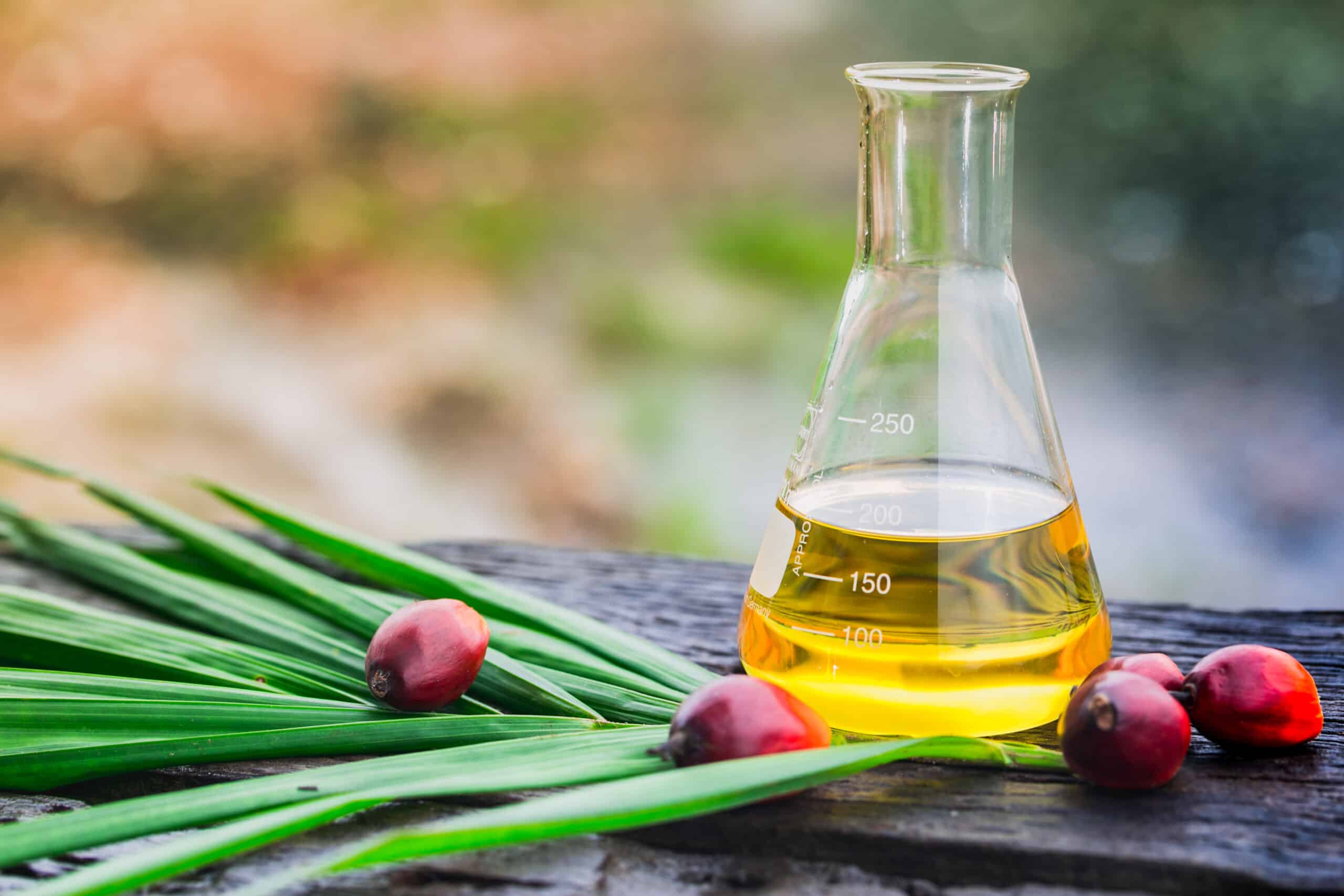Share this post
The role that tocotrienols play in inflammation, immunity, and lung health
In addition to the tocopherol members of the vitamin E family, of which α-tocopherol dominates research, α-, β-, γ- and δ-tocotrienols also exist. Numerous studies suggest that tocotrienols have superior antioxidant and anti-inflammatory properties. However, they account for less than 5% of vitamin E research thus far, as they were discovered in more recent years and are less common in nature.[1]
Palm oil is rich in tocotrienols and also contains approximately 30% tocopherols, while annatto oil contains 100% tocotrienols with a 90:10 δ:γ ratio. Tocotrienols have been shown to deliver numerous benefits particularly for metabolic, cardiovascular, and central nervous system health.[2] In regard to immune function and respiratory health, we also have multiple human and animal studies showing they may be of benefit.
Tocotrienols and immune function. In mice, daily supplementation with tocotrienol-rich palm oil significantly improved the response to vaccination, increasing levels of interferon (IFN)-γ (a cytokine of particular importance to our response against viral invaders) and lymphocyte proliferation.[3] In a four-arm animal study comparing the effects of a tocotrienol-rich blend (TRB) of α-, γ-, and δ-tocotrienols (including α-tocopherol as well) to δ-tocotrienols, α-tocopherol, and placebo, only the groups receiving the TRB or δ-tocotrienols had a significant increase in antibodies to tetanoid toxin (TT) after vaccination.[4] Although IFN-γ levels were higher in all mice receiving the different forms of vitamin E than the control, they were highest in those given δ-tocotrienols followed by the TRB. Production of tumor necrosis factor (TNF)-α (a cytokine that can trigger substantial inflammation) was suppressed in all vitamin E groups compared to control.
In young, healthy humans, daily supplementation with 400 mg of a blend of tocotrienols with α-tocopherol for one month prior to and after vaccination with tetanoid toxin significantly enhanced the vaccine response.
In young, healthy humans, daily supplementation with 400 mg of a TRB also containing α-tocopherol for one month prior to and after vaccination with TT also significantly enhanced TT-stimulated leukocyte IFN-γ production as well as anti-TT IgG production one month after vaccination compared to the placebo group.[5]
Studies have also shown that supplementation with a palm-sourced tocotrienol and tocopherol blend significantly increases lymphocyte proliferation in older mice compared to those receiving α-tocopherol only.[6] A parallel in vitro study showed that α-tocotrienol had the greatest effect of stimulating lymphocyte proliferation. No changes in lymphocyte proliferation were seen in younger mice in this study, suggesting that supplemental vitamin E is of greater importance in an aging population, as discussed in Part 1.
Tocotrienols and inflammation. One unique aspect of protection that tocotrienols have demonstrated, but α-tocopherol has not, is reduction of NLRP3 inflammasome activation. Inflammasomes are protein complexes found in the cytosol of cells of the innate immune system and epithelial barrier tissues, such as the airway, intestines, and skin.[7],[8] The NLRP3 inflammasome plays a role in numerous conditions, including the many facets of metabolic syndrome, neurodegenerative disease, respiratory disease, stroke and cardiovascular disease, and certain infectious diseases.[9],[10],[11],[12] Air pollution and allergies are both factors that can push the NLRP3 inflammasomes of the airway epithelium to a “tipping point” upon which subsequent insults, such as an infection, can have a cascade effect of excessive cytokine production.[13],[14],[15],[16] In animals, systemic inflammatory response syndrome has been shown in multiple conditions to be related to activation of the NLRP3 inflammasome.[17],[18]
Multiple studies have shown that γ- and δ-tocotrienols, or a γ-/δ-tocotrienol blend, helps protects against NLRP3 inflammasome-related inflammation and development of disease.
Multiple studies have shown that γ- and δ-tocotrienols, or a γ-/δ-tocotrienol blend, significantly suppress NLRP3 inflammasome activation, and helps protects against NLRP3 inflammasome-related inflammation and development of disease.[19],[20],[21],[22],[23] In critically ill patients, thrice daily administration of a combination of 400 IU of a tocotrienol blend with 500 mg of vitamin C (taken by nasogastric or oral administration) was shown clinically to improve numerous parameters associated with systemic inflammatory response syndrome, with better outcomes seen with the tocotrienol blend than in the group receiving α-tocopherol with vitamin C.[24]
Tocotrienols and asthma. Due to their high antioxidant and anti-inflammatory potential, studies have also investigated tocotrienols as therapies for asthma and smoking-related respiratory disease, both conditions in which oxidative stress and inflammation contribute to the pathology. In animals, treatment with tocotrienols was shown to reduce allergen-triggered inflammatory cell infiltration and multiple markers of inflammation.[25] While the lung histology of non-treated animals showed severe edema and inflammatory cell infiltration, the lungs of the tocotrienol-treated mice were healthy and normal appearing.
Multiple cellular studies have also shown that γ-tocotrienol inhibits smooth muscle cell proliferation, migration, and phenotype changes that contribute to airway remodeling in asthma.
In a study comparing vitamin E isoforms, similar findings related to inflammation and lung histology were shown, with γ-tocotrienol performing better than α-tocopherol and the other tocotrienol isoforms.[26] Multiple cellular studies have also shown that γ-tocotrienol inhibits human airway smooth muscle cell proliferation, migration, and phenotype changes that contribute to airway remodeling in asthma.[27],[28]
Tocotrienols and smoking. In mice, γ-tocotrienol has also been shown to significantly attenuate the inflammation, oxidative stress, neutrophil infiltration, and lung histology changes caused by cigarette smoke.[29] A dose-dependent effect was seen with regard to the recovery of antioxidant and antioxidant enzyme capacity. After two months of exposure to cigarette smoke, with γ-tocotrienols provided in the final three weeks only, the mice receiving tocotrienols at the highest dose were observed to have very little changes in the bronchial epithelium thickness and alveolar diameter – even better than those receiving prednisone. All aspects of lung function were significantly improved with the highest dose of tocotrienols, and again, many parameters improved to a greater extent with tocotrienols than they did with prednisone.
It is currently under investigation if tocotrienols may ameliorate lung fibrosis of an inflammatory etiology as several pathways implicated in these tissue changes are similar to hepatic fibrosis,[30] which multiple studies have shown tocotrienols improve.[31],[32]
Clearly, there are many reasons to consider both α-tocopherol and a blend of tocotrienols as a part of a protocol to support normal, healthy immune function and the management of related inflammation and oxidative stress. As α-tocopherol is well established to ameliorate vitamin E deficiency, it would be prudent to consider its inclusion in a supplement routine to prevent the immune-related changes caused by deficiency, while the tocotrienols offer additional antioxidant and inflammation protection.
Click here to see References
[1] Peh HY, et al. Vitamin E therapy beyond cancer: tocopherol versus tocotrienol. Pharmacol Ther. 2016 Jun;162:152-69.
[2] Meganathan P, Fu JY. Biological properties of tocotrienols: evidence in human studies. Int J Mol Sci. 2016 Oct 26;17(11).
[3] Nesaretnam K, et al. Supplementation of tocotrienol‐rich fraction increases interferon‐gamma production in ovalbumin‐immunized mice. Euro J Lipid Sci Tech. 2010 May;112(5):531-6.
[4] Radhakrishnan AK, et al. Supplementation with natural forms of vitamin E augments antigen-specific TH1-type immune response to tetanus toxoid. Biomed Res Int. 2013;2013:782067.
[5] Mahalingam D, et al. Effects of supplementation with tocotrienol-rich fraction on immune response to tetanus toxoid immunization in normal healthy volunteers. Eur J Clin Nutr. 2011 Jan;65(1):63-9.
[6] Ren Z, et al. Dietary supplementation with tocotrienols enhances immune function in C57BL/6 mice. J Nutr. 2010 Jul;140(7):1335-41.
[7] Winsor N, et al. Canonical and noncanonical inflammasomes in intestinal epithelial cells. Cell Microbiol. 2019 Nov;21(11):e13079.
[8] Palazon-Riquelme P, Lopez-Castejon G. The inflammasomes, immune guardians at defence barriers. Immunology. 2018 Nov;155(3):320-30.
[9] Brusselle GG, et al. Inflammasomes in respiratory disease: from bench to bedside. Chest. 2014 May;145(5):1121-33.
[10] Yang Y, et al. Recent advances in the mechanisms of NLRP3 inflammasome activation and its inhibitors. Cell Death Dis. 2019 Feb 12;10(2):128.
[11] Liu D, et al. Role of NLRP3 inflammasome in the pathogenesis of cardiovascular diseases. Basic Res Cardiol. 2017 Dec 9;113(1):5.
[12] Gao L, et al. NLRP3 inflammasome: a promising target in ischemic stroke. Inflamm Res. 2017 Jan;66(1):17-24.
[13] Im H, Ammit AJ. The NLRP3 inflammasome: role in airway inflammation. Clin Exp Allergy. 2014 Feb;44(2):160-72.
[14] Hirota JA, et al. Urban particulate matter increases human airway epithelial cell IL-1β secretion following scratch wounding and H1N1 influenza A exposure in vitro. Exp Lung Res. 2015;41(6):353-62.
[15] Sayan M, Mossman BT. The NLRP3 inflammasome in pathogenic particle and fibre-associated lung inflammation and diseases. Part Fibre Toxicol. 2016 Sep 20;13(1):51.
[16] Varga A, et al. Ragweed pollen extract intensifies lipopolysaccharide-induced priming of NLRP3 inflammasome in human macrophages. Immunology. 2013 Apr;138(4):392-401.
[17] Sendler M, et al. NLRP3 Inflammasome regulates development of systemic inflammatory response and compensatory anti-inflammatory response syndromes in mice with acute pancreatitis. Gastroenterology. 2020 Jan;158(1):253-69.
[18] Xiang M, et al. Hemorrhagic shock activation of NLRP3 inflammasome in lung endothelial cells. J Immunol. 2011 Nov 1;187(9):4809-17.
[19] Kim Y, et al. Gamma-tocotrienol attenuates the aberrant lipid mediator production in NLRP3 inflammasome-stimulated macrophages. J Nutr Biochem. 2018 Aug;58:169-77.
[20] Kim Y, et al. Suppression of NLRP3 inflammasome by γ-tocotrienol ameliorates type 2 diabetes. J Lipid Res. 2016 Jan;57(1):66-76.
[21] Buckner T, et al. Annatto tocotrienol attenuates NLRP3 inflammasome activation in macrophages. Curr Dev Nutr. 2017 May 31;1(6):e000760.
[22] Buckner T. Delta tocotrienol attenuates NLRP3 inflammasome activation via Inhibition of NF-κB priming and reactive oxygen species generation. (Master’s thesis). Lincoln (Nebraska): University of Nebraska; 2016. Available from University of Nebraska-Lincoln Digital Commons.
[23] Kim Y. Mechanisms by which gamma tocotrienol suppresses NLRP3 inflammasome and nonalcoholic fatty liver disease. (Doctoral dissertation). Lincoln (Nebraska): University of Nebraska; 2018. Available from University of Nebraska-Lincoln Digital Commons.
[24] Husam YE, et al. The effectiveness of tocotrienol rich fraction and alpha tocoferol with combination of vitamin C in the management of systemic inflammatory response syndrome (SIRS). J Surgical Academia. 2017 Oct;7(2):4-12.
[25] Zainal Z, et al. Effects of palm oil tocotrienol-rich fraction (TRF) and carotenes in ovalbumin (OVA)-challenged asthmatic Brown Norway rats. Int J Mol Sci. 2019 Apr 10;20(7):1764.
[26] Peh HY, et al. Vitamin E isoform γ-tocotrienol downregulates house dust mite-induced asthma. J Immunol. 2015 Jul 15;195(2):437-44.
[27] Harada T, et al. γ-Tocotrienol reduces human airway smooth muscle cell proliferation and migration. Pulm Pharmacol Ther. 2015 Jun;32:45-52.
[28] Fukushima T, et al. γ-Tocotrienol inhibits TGF-β1-induced contractile phenotype expression of human airway smooth muscle cells. Yonago Acta Med. 2017 Mar 9;60(1):16-23.
[29] Peh HY, et al. Vitamin E isoform γ-tocotrienol protects against emphysema in cigarette smoke-induced COPD. Free Radic Biol Med. 2017 Sep;110:332-44.
[30] Makarev E, et al. Common pathway signature in lung and liver fibrosis. Cell Cycle. 2016 Jul 2;15(13):1667-73.
[31] Kim Y, et al. Gamma-tocotrienol attenuates the hepatic inflammation and fibrosis by suppressing endoplasmic reticulum stress in mice. Mol Nutr Food Res. 2018 Nov;62(21):e1800519.
[32] Yachi R, et al. Effects of tocotrienol on tumor necrosis factor-α/d-galactosamine-induced steatohepatitis in rats. J Clin Biochem Nutr. 2013 Mar;52(2):146-53.
The information provided is for educational purposes only. Consult your physician or healthcare provider if you have specific questions before instituting any changes in your daily lifestyle including changes in diet, exercise, and supplement use.
Share this post
Dr. Carrie Decker
Related posts
Nutritional Support for Seasonal Allergies
Focus on antioxidant support Although spring brings the joys of warmer days and colorful flowers, it’s also the beginning of allergy season for many (over 19 million of us, to be exact!)[1]For some of us, allergies hit us worse in the fall. Unfortunately, if you have an allergic disposition, it may never seem to…
Supplements to Take With and Without Food
Guidelines for optimal absorption and benefit “I think your love language is snacks,” my friend says after I greet her with a hug and a jar of homemade vegan coconut yogurt. “I think you’re right!” I laugh, and beckon her to open up the jar so we can have a nosh. Later that month,…
Are the Nutrients You Consume Bioavailable?
How to get the most out of your diet and supplements The body’s physiology is intricate and complex. Even when we eat a healthy diet, we may not always absorb or utilize all of the nutrients our body needs. This is why scientists who formulate nutrient supplements are obsessed with bioavailability, defined as the…
Vaccine Efficacy, Part 1 of 2: Can a Healthy Diet Improve It?
The influence of dietary fiber, prebiotics, beta-glucan, and fucoidan Vaccines are one of the greatest successes of modern medicine, helping to protect entire populations against a wide range of infectious diseases.[1] A vaccine works by training the immune system to recognize and combat pathogens, either viruses or bacteria. To do this, certain molecules (antigens)…
How to Hack Your Habits – Get Moving!
Regular physical activity makes us healthier and happier We all know we need to move more to maintain physical fitness, but did you know that regular physical activity is the single most important thing you can do for your health?[1] Of course, exercise is an important contributor to weight loss.[2],[3] But it turns out…
Cardiovascular Health and Lipoprotein(a)
Addressing a genetic issue and supporting cardiovascular health naturally Anyone who has ever listened to his or her own heart with a stethoscope has likely found the lub-dub pattern reassuring. The rhythmic regularity of the heart at rest can lull us into meditation, much like it helps an infant go to sleep, while the…
Categories
- Botanicals (56)
- GI Health (53)
- Healthy Aging (121)
- Immune Support (39)
- In The News (39)
- Kids Health (21)
- Stress and Relaxation (50)
- Uncategorized (1)
- Video (9)
- Vitamins & Minerals (51)




